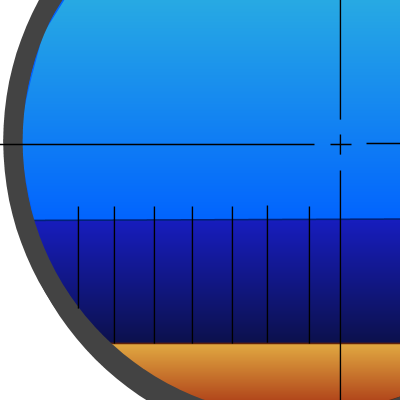HY8:LOWFLOW Method: Difference between revisions
(Created page with "=Low Flow Hydraulics Method= The HY-8 Low Flow Hydraulics method is based on the [http://www.fhwa.dot.gov/publications/research/infrastructure/structures/bridge/14064/14064.pd...") |
No edit summary |
||
| Line 1: | Line 1: | ||
=Low Flow Hydraulics Method= | =Low Flow Hydraulics Method= | ||
[[Image:CulvertCrossSectionSlices.jpg| left]] | |||
The HY-8 Low Flow Hydraulics method is based on the [http://www.fhwa.dot.gov/publications/research/infrastructure/structures/bridge/14064/14064.pdf TFHRC report: Fish Passage in Large Culverts With Low Flow]. The method divides half of the culvert span into slices. The velocity and depth of that slice are computed, then compared to a threshold. If the slice has a velocity lower than the threshold and a depth greater than the threshold, the slice is determined to pass the requirements. For more information on this method, please see the TFHRC report listed above. | The HY-8 Low Flow Hydraulics method is based on the [http://www.fhwa.dot.gov/publications/research/infrastructure/structures/bridge/14064/14064.pdf TFHRC report: Fish Passage in Large Culverts With Low Flow]. The method divides half of the culvert span into slices. The velocity and depth of that slice are computed, then compared to a threshold. If the slice has a velocity lower than the threshold and a depth greater than the threshold, the slice is determined to pass the requirements. For more information on this method, please see the TFHRC report listed above. | ||
The Low Flow Hydraulics calculator may be used any time that there is a requirement on depth or velocity through a culvert. This method is commonly used to determine fish passage where the threshold depth and velocity relate to the swimming ability of a targeted fish. | The Low Flow Hydraulics calculator may be used any time that there is a requirement on depth or velocity through a culvert. This method is commonly used to determine fish passage where the threshold depth and velocity relate to the swimming ability of a targeted fish. | ||
Revision as of 21:40, 24 April 2015
Low Flow Hydraulics Method
The HY-8 Low Flow Hydraulics method is based on the TFHRC report: Fish Passage in Large Culverts With Low Flow. The method divides half of the culvert span into slices. The velocity and depth of that slice are computed, then compared to a threshold. If the slice has a velocity lower than the threshold and a depth greater than the threshold, the slice is determined to pass the requirements. For more information on this method, please see the TFHRC report listed above.
The Low Flow Hydraulics calculator may be used any time that there is a requirement on depth or velocity through a culvert. This method is commonly used to determine fish passage where the threshold depth and velocity relate to the swimming ability of a targeted fish.
